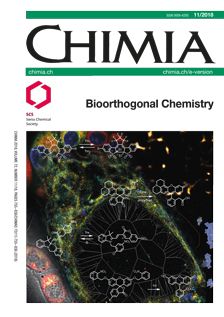Bioorthogonal Decaging Reactions for Targeted Drug Activation
DOI:
https://doi.org/10.2533/chimia.2018.771PMID:
30514419Keywords:
Antibody–drug conjugates, Bifunctional linkers, Bioorthogonal decaging, Targeted drug deliveryAbstract
Bioorthogonal decaging reactions are highly selective transformations which involve the cleavage of a protecting group from a molecule of interest. Decaging reactions can be classified into subgroups depending on the nature of the trigger; they can be photo-, metal- or small molecule-triggered. Due to their highly selective and biocompatible nature, they can be carried out in living systems as they do not interfere with any endogenous processes. This gain-of-function allows controlled activation of proteins and release of fluorophores and drugs in vivo. Although there are many examples of fluorophore/protein release, this review focuses on the application of bioorthogonal decaging reactions for targeted drug activation. One strategy for targeted drug delivery is tissue-selective activation of prodrugs and antibody–drug conjugates (ADCs). Bioorthogonal decaging provides a highly selective, controllable method for activating prodrugs and ADCs, reducing toxicity due to the off-target drug release that occurs in endogenous activation strategies. Here we focus on the development of bifunctional linkers that enable studies of bioorthogonal chemistry for activation of ADCs.Downloads
Published
2018-11-30
Issue
Section
Scientific Articles
License
Copyright (c) 2018 Swiss Chemical Society

This work is licensed under a Creative Commons Attribution-NonCommercial 4.0 International License.
How to Cite
[1]
Chimia 2018, 72, 771, DOI: 10.2533/chimia.2018.771.







